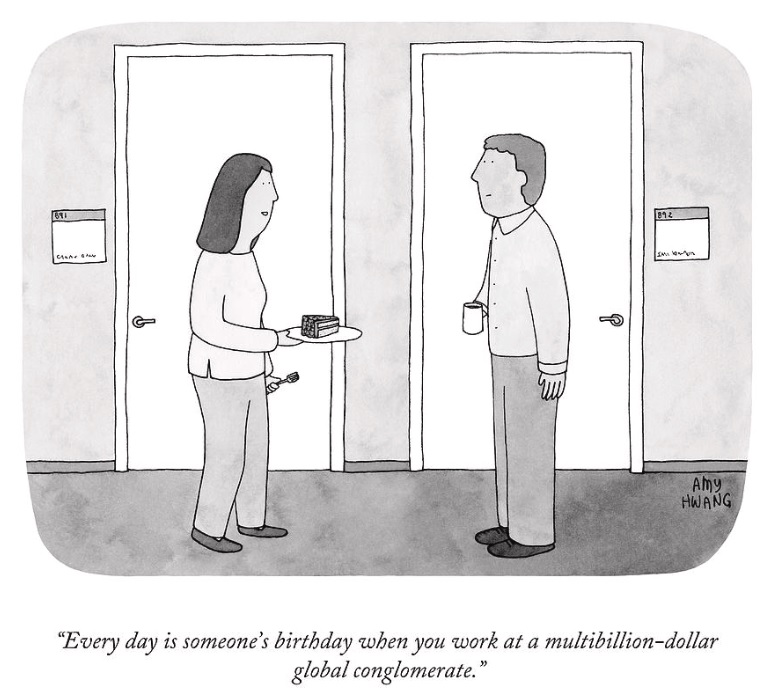
Question: “Every day is someone’s birthday, when you work at a multi-billion dollar company.” How many employees do you need to have, in expectation, a birthday every day?
You may assume a year consists of 365 days, and each day has equal probability of being someone’s birthday.
Answer: 2365.
Let $F$ be the expected number of employees needed. Let $f_t$ be the number of additional employees needed to have exactly $t$ different birthdays, assuming the group of employees sofar cover $t-1$ birthdays. The probability that an additional employee has a new birthday is $p_t=\frac{365-(t-1)}{365}$. E.g. $p_1 = \frac{365}{365}=1$, $p_2 = \frac{364}{365}$, $\ldots$, $p_{365} = \frac{1}{365}$. In expectation one needs $E[f_t]=1/p_t$ additional employees. By the linearity of expectations, one thus needs in expectation: $E[F] = \sum_{t=1}^{365}\frac{1}{p_t}=\frac{365}{365} + \frac{365}{364} + \ldots + \frac{365}{1} = 365 (\frac{1}{1} + \frac{1}{2} + \ldots + \frac{1}{365}) = 365 \cdot H_{365}$, where $H_n$ is the harmonic number.
The exact number $365 \cdot H_{365} = 2364.7$ ; using the approximation of the Harmonic number $H_n \approx ln(n) + 0.58n + 1/2 = 2365.15$.
This problem is known as the Coupon Collector’s problem. The average number of persons needed, exceeds the median number of persons needed, which is 2287; see Flowing Data for the simulation.